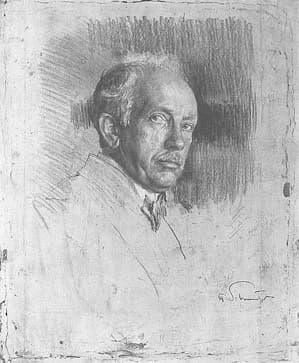Arnold Bax (1883-1953) was a fantastic pianist, but being shy and reclusive, he rarely appeared in public after he had reached his 20th birthday. The piano had always been his favourite instrument, and he was known for astonishing audiences by being able to read a full orchestral score at sight at the piano. He composed a good deal of music for the piano, and evocative piano miniatures were always part of his repertoire.
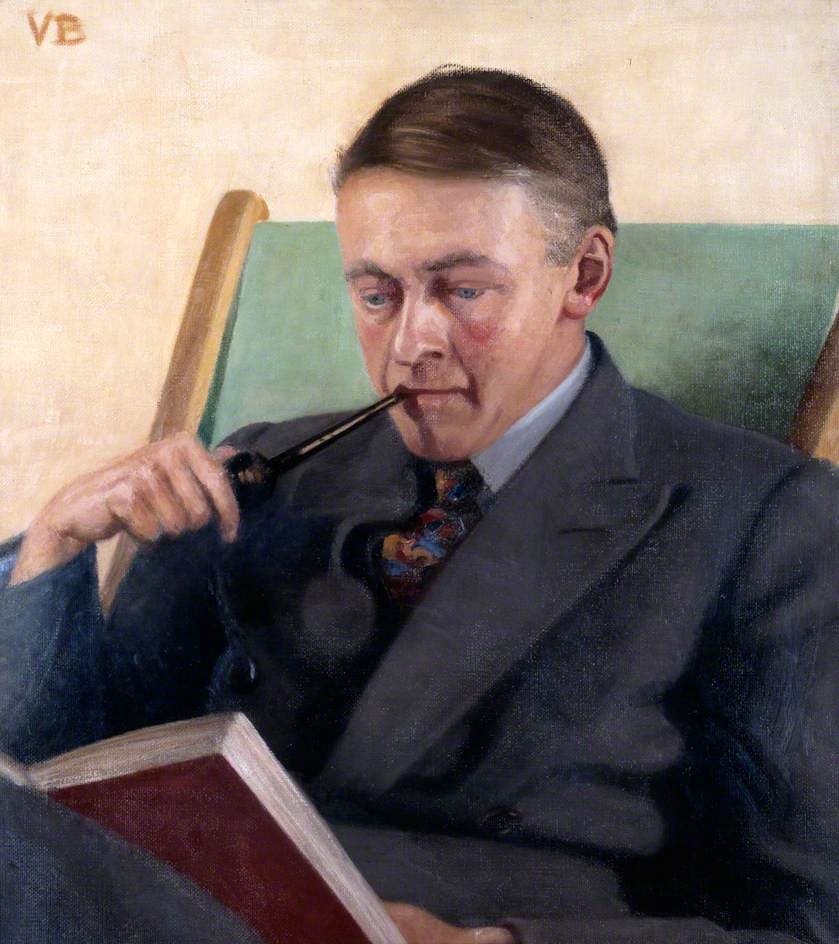
Arnold Bax
We thought it might be fun to explore some of these little jewels primarily written for the three pianists, Myra Hess and Irene Scharrer, contemporaries at the Royal Academy of Music, and for Harriet Cohen, thirteen years his junior with whom Bax started a celebrated love affair during the First World War.
Arnold Bax: “To the Maiden with the Daffodil”
Arnold Bax: “To the Maiden with the Daffodil” (Ashley Wass, piano)
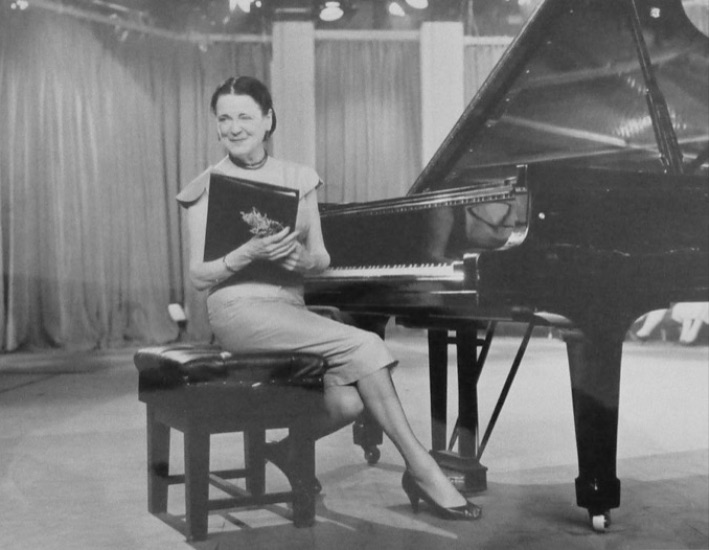
Harriet Cohen
Bax met the pianist Harriet Cohen in the autumn of 1914 when she was barely 18 years old. The story goes that in January 1915 she arrived at a tea party wearing as decoration a single daffodil, and Bax was immediately infatuated. Overnight, he wrote the piano piece “To the Maiden with a Daffodil,” adding the verse dedication, “This for the maiden with the daffodil/Whose fingers’ intricate enchantments fill/Our ears with far strayed echoes of Romance.”
The naïve quality of the music and Bax’s instructions to the player, “fresh and innocent” and “playful and capricious,” leaves no doubt as to the impression she had made on him. Bax wrote a good many similar short piano works, all dedicated to Cohen, in a mere thirteen days.
Arnold Bax: “The Princess’s Rose-Garden”
Arnold Bax: “The Princess’s Rose-Garden” (Ashley Wass, piano)
Another piece dedicated to Harriet, “The Princess’s Rose Garden,” is a fully-fledged love song. The air seems to be heavy with perfume, and Bax selected the same F-sharp major tonality with which Debussy’s sirens had seduced him in the Nocturnes for orchestra No. 3.
Bax writes, “This piece must be played as simple as the elaborateness of its detail will allow. No harmonic point should be made, and the accompaniment figures should be kept subservient to the melodic line, which first takes shape, singingly sweetly buried in the tenor area of the left hand.” Originally, this atmospheric miniature was entitled “Berceuse”, providing yet another clue to its character.
Arnold Bax: “A Mountain Mood”
Arnold Bax: “A Mountain Mood” (Eric Parkin, piano)
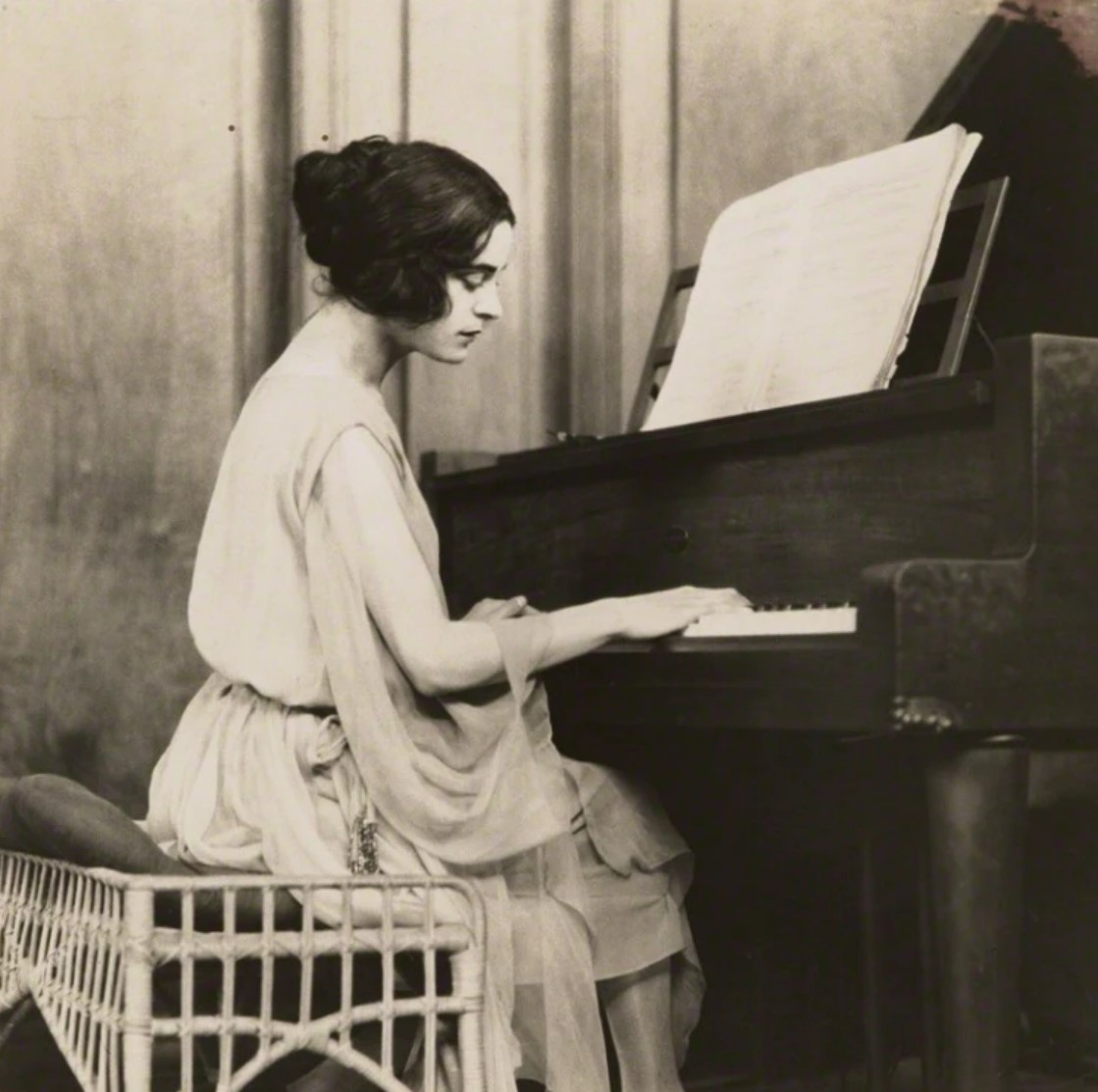
Harriet Cohen, ca 1921
Dated 5 September 1915, “A Mountain Mood” unfolds as a melody and variations. Once again written for Harriet Cohen, Bax writes on the manuscript, “To Tania who plays it perfectly.”
“Tania” was Bax’s nickname for Harriet, originating during a time when everybody was infatuated with Russian Ballet. Bax’s comment that she plays it perfectly led to a rivalry between Harriet and Myra Hess, and Myra quickly dubbed her “Tania Tompkins.” Harriet Cohan had small hands, barely able to stretch to an octave, but Bax, as you can hear, was seemingly oblivious to that particular problem.
Arnold Bax: “Nereid”
Arnold Bax: “Nereid” (Ashley Wass, piano)
Much of Bax’s early music surely arose from improvisation at the piano, and that “approach led him to invent harmonies which, used in a colouristic way, must have sounded startlingly modern.” Let’s listen to one more piano piece Bax dedicated to Harriet Cohen, “Nereid,” which is dated 24 March 1916.
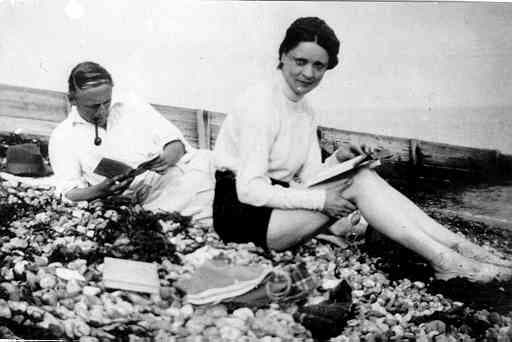
Arnold Bax and Harriet Cohen
The piece was first titled “Ideala,” but eventually published under the present title. Harriet played it at Wigmore Hall in June 1920 and she later published an interpretation. She writes, “Bax has often told me that he considers his music to be directly derived from nature. When he wrote this piece . . . he had vaguely in mind some sort of water nymph of Greek mythological times.”
Arnold Bax: “Whirligig”
Arnold Bax: Whirligig (Eric Parkin, piano)
Irene Scharrer was a classmate of Arnold Bax at the RAM in London, and both took piano lessons from Tobias Matthay. Scharrer was actually distantly related to Harriet Cohen, the two sharing a great-grand-grandfather. Scharrer was only 12 when she arrived at the Academy on the same day as Arnold Bax.

Irene Scharrer
Scharrer was extremely self-confident and assertive, and she played her debut at the age of 16 while still a RAM student. Her playing was described “as delightfully sympathetic and with delicate passage-work, which she dispatched with fascinating clearness and lightness.” Bax wrote the short concert encore “Whirligig” for Scharrer in 1919.
Arnold Bax: “In a Vodka Shop”
Arnold Bax: “In a Vodka Shop” (Ashley Wass, piano)
As you can already tell, Bax had a bit of a problem trying to keep his lady piano champions happy. The third female pianist in the mix was Myra Hess. She had started piano lessons at the age of 5 and studied at the Guildhall School of Music and at the Royal Academy of Music under Tobias Matthay as well. Her lifelong friend Irene Scharrer wrote, “hers was the most brilliant wit I have ever known, with an almost infectious delight in nonsense.”
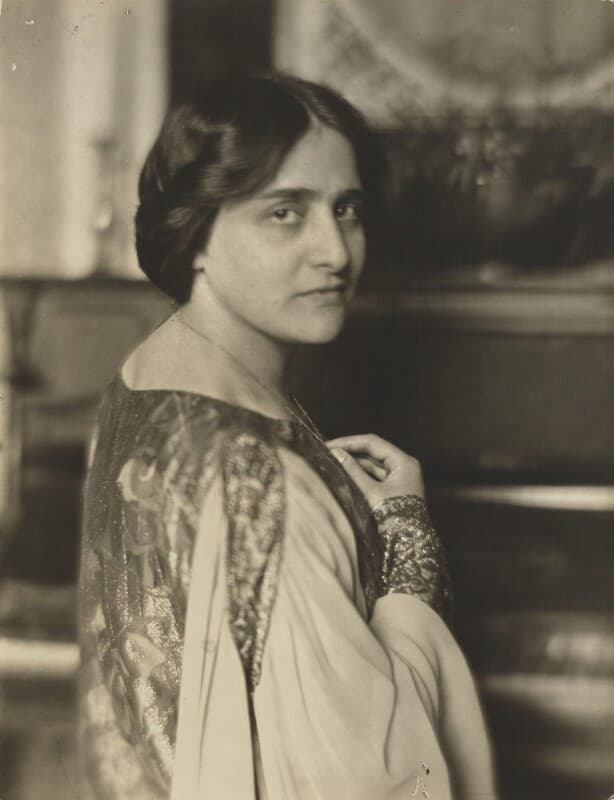
Myra Hess
Hess made her Proms debut in 1908 with the Liszt E-flat concerto under Henry Wood, and she played roughly 100 concerts a year before the war. Hess was very well known in London, and Bax wanted Myra to play his pieces. Harriet, of course, insisted that she should play all of his compositions, and while he dedicated the “Daffodil” to Harriet, he dedicated “In a Vodka Shop” to Myra, who also gave the first performance on 29 April 1915.
Arnold Bax: Moy Mell, “The Pleasant Plain, an Irish Tone Poem”
Arnold Bax: Moy Mell, “The Pleasant Plain, an Irish Tone Poem” (Ashley Wass, piano; Martin Roscoe, piano)
Irene Scharrer and Myra Hess, or Hyra Mess, as she called herself, were great friends, and they frequently appeared on stage together. As such, Bax composed the piano duet “Moy Mell” (The Happy Plain) for them. Hess and Scharrer gave the première in December 1916.
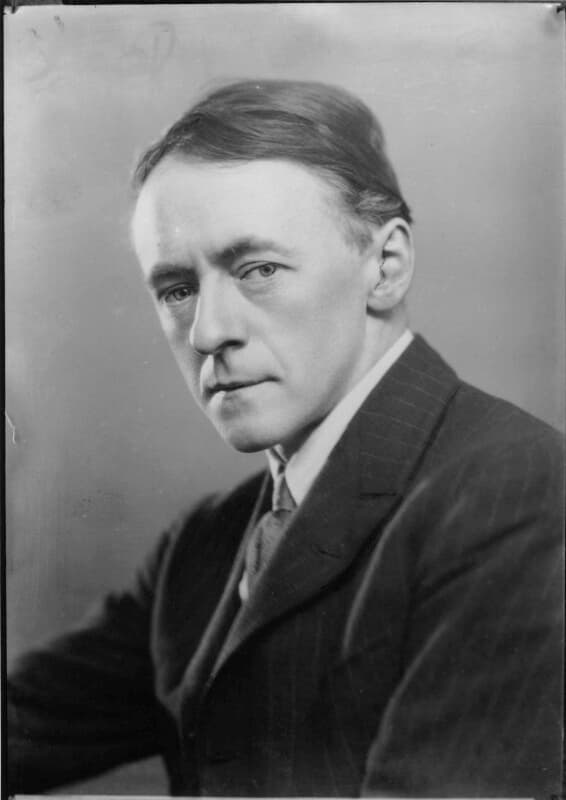
Arnold Bax
Bax subtitled the piece “An Irish Tone-Poem,” and in a radio talk, he summarised his programmatic sources for this piece. “The poetry and prose of Yeats introduced me to the Irish Faery hierarchy . . . there were three different earthly paradises as conceived by the ancient Gael. . . the Hollow Hill . . . Hy-Brazil or the land of eternal youth . . . and Moy Mell – the happy plain. I wrote tone poems about all these three pagan places of bliss.”
Arnold Bax: 2 Russian Tone Pictures
Arnold Bax: 2 Russian Tone Pictures (Ashley Wass, piano)
In the spring and summer of 1910, Bax went to Russia and the Ukraine in pursuit of a Ukrainian girl by the name of Natalia Skarginsky, whom he had met in Hampstead. They were accompanied by a mutual friend, Olga Antonietti. Bax gave them the pseudonyms “Loubya Korolenko,” and “Fiammetta.” And he also composed Two Russian Tone-Pictures, evocatively titled “Nocturne: May Night in the Ukraine and Gopak.”
“May Night in the Ukraine” is derived from Nikolay Gogol’s celebrated evocation in “Evenings on a Farm Near Dikanka.” “Gopak” is subtitled “National Dance” and when it was first played by Myra Hess at the Bechstein Hall in April 1913 it was actually called “Barbarian Dance,” which perhaps hints at the composer’s intention. Nevertheless, it was affectionately dedicated to his piano teacher, Tobias Matthay.
Arnold Bax: Sleepy Head
Arnold Bax: Sleepy Head (Ashley Wass, piano)
With all this dilly-dallying going on, did I actually tell you that Bax was married? Elsita Sobrino came from a highly musical and cosmopolitan family, and she was a close friend of Arnold’s sister Evelyn. Elsita was described as “dark, attractive, and warm-hearted with a highly generous nature.” She also had a fine voice, and during Christmas 1910, she sang some of Arnold’s songs. Things moved rather quickly, and they got married on 28 January 1911.
The marriage produced two children and would soon collapse, although the couple remained officially married until his death. His tender miniature “Sleepy-head,” dated 24 May 1915, is dedicated to Elsita, and “provides a musical vignette of their two sleeping children, Dermot and Maeve Astrid.”
Arnold Bax: “What the Minstrel told us”
Arnold Bax: “What the Minstrel told us” (Ashley Wass, piano)
Bax spent his early years and the years immediately after his marriage in Ireland, where he spent much time absorbing the musical and literary atmosphere. He even developed his literary ego Dermot O’Bryne, and published poetry, short stories, and plays. As he recalled, “I worked very hard at the Irish language and steeped myself in its history and saga, folk-tale and fairy-lore. Under this domination, my musical style became strengthened … I began to write Irishly, using figures and melodies of a definitely Celtic curve.”
Arnold Bax: “Winter Waters”
As you can tell in “What the Minstrel told us,” not all of Bax’s shorter pieces are love stories and sunlit idylls. Bax did encounter Irish nationalist politics, and the Easter Rising in Dublin in 1916 was a personal blow. Subtitled “Tragic Landscape,” Winter Water originated in September 1915. Although this dramatic miniature tone poem pre-dates the Dublin Rising, Bax surely had the rumblings of war on his mind. The Bax miniatures are beautiful evocations of landscapes, allusions, biographies, and deeply felt feelings, expressions, and affections.
For more of the best in classical music, sign up for our E-Newsletter
Arnold Bax: Winter Waters (Ashley Wass, piano)

